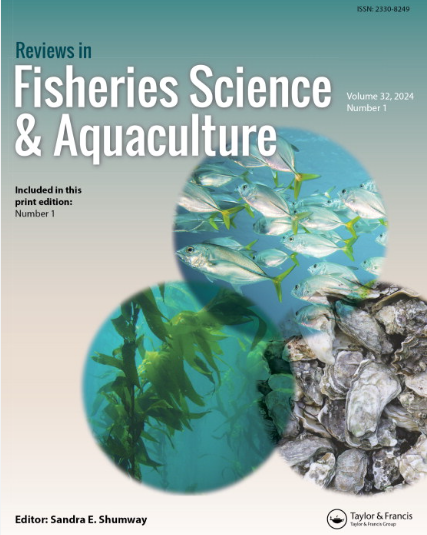针对扇贝的拖曳渔具捕捞效率的全球综述
IF 5.3
1区 农林科学
Q1 FISHERIES
引用次数: 1
摘要
拖曳渔具的渔获效率是指在渔具路径上捕获和保留的目标鱼种的比例。渔获效率是计算建立渔业管理参考点所需的种群状况的基础。因此,对许多具有重要商业价值的扇贝(果胶)渔业的捕捞效率进行了估计。本文综合并讨论了用于捕贝的拖带渔具的渔获效率的估计、渔获效率的估计方法以及影响这些估计的因素。各研究的渔获效率估计值存在相当大的差异(0.1至0.7),重要的是在调查和种群评估期间考虑到这种差异,以避免错误的建议和估计值。实验条件、估计方法和扇贝行为的差异导致了高差异。扇贝的大小和底物类型是研究中讨论的两个最常见的报告类别,因此应被视为捕捞效率的两个最重要的驱动因素。其他重要的因素,如齿轮规格和扇贝种类在一些研究中也有特色。通过对渔获效率变化的理解和核算,对设计渔获效率实验、调查设计和种群评价具有重要意义。本文章由计算机程序翻译,如有差异,请以英文原文为准。
A Global Review of Catch Efficiencies of Towed Fishing Gears Targeting Scallops
Abstract The catch efficiency of towed fishing gears is the fraction of the target species in the gear path that were caught and retained. Catch efficiency is fundamental for calculating population status required for establishing fisheries management reference points. Consequently, catch efficiency has been estimated for many commercially important scallop (Pectinid) fisheries. This article synthesizes and discusses estimates of catch efficiency of towed gears used to target scallops, the methods for estimating catch efficiency and the factors that influence these estimates. There exists considerable variation in catch efficiency estimates among studies (0.1 to 0.7), and it is important that this variation is accounted for during surveys and stock assessments to avoid erroneous advice and estimates. The high variation was driven by differences in experimental conditions, estimation methods and scallop behavior. Scallop size and substrate type were the two most common reporting categories discussed in the studies and consequently should be considered the two most important drivers of catch efficiency. Other important factors such as gear specifications, and scallop species were featured in some studies. This review will be highly useful for designing catch efficiency experiments, survey design and stock assessments by understanding, and accounting for, catch efficiency variation.
求助全文
通过发布文献求助,成功后即可免费获取论文全文。
去求助
来源期刊

Reviews in Fisheries Science & Aquaculture
FISHERIES-
CiteScore
25.20
自引率
0.90%
发文量
19
期刊介绍:
Reviews in Fisheries Science & Aquaculture provides an important forum for the publication of up-to-date reviews covering a broad range of subject areas including management, aquaculture, taxonomy, behavior, stock identification, genetics, nutrition, and physiology. Issues concerning finfish and aquatic invertebrates prized for their economic or recreational importance, their value as indicators of environmental health, or their natural beauty are addressed. An important resource that keeps you apprised of the latest changes in the field, each issue of Reviews in Fisheries Science & Aquaculture presents useful information to fisheries and aquaculture scientists in academia, state and federal natural resources agencies, and the private sector.
 求助内容:
求助内容: 应助结果提醒方式:
应助结果提醒方式:


